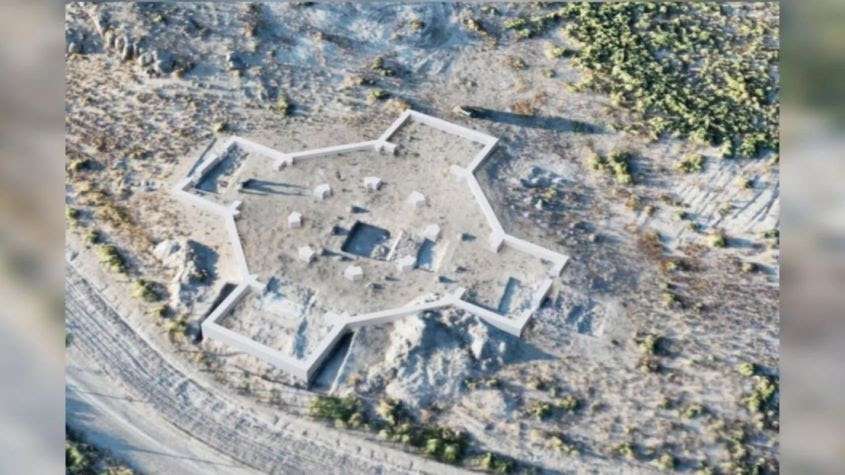Armenian-German team uncovers fourth-century octagonal church, the oldest in Armenia

YEREVAN — Archaeologists from the National Academy of Sciences (NAS) of Armenia and the University of Münster in Germany have uncovered the oldest known church in Armenia. The discovery, which was made during excavations over the past year in Ararat Province, was completed on Friday when researchers identified the church’s foundation, according to a press release issued by the NAS.
The church is located in the area once known as the ancient city of Artashat (Artaxata), the former capital of the Kingdom of Armenia. The ruins lie on the left bank of the Araks River, near the Khor Virap Monastery, in present-day Ararat Province.
The structure is notable for being the first octagonal church ever discovered in Armenia, covering an area of about 1,000 square meters. The research team excavated several sections of the building and conducted geophysical analyses to study its structure.
Professor Achim Lichtenberger of the University of Münster noted that the building dates back to the fourth century, making it the oldest archaeologically documented church in the country. He emphasized that this finding provides clear evidence of early Christianity in Armenia.
Dr. Mkrtich H. Zardaryan, head of the archaeological mission and chairman of the Department of Ancient Armenian Archaeology at the Institute of Archaeology and Ethnography of the NAS, stated: “Octagonal churches were unknown here until now, but we are very familiar with them from the Eastern Mediterranean region, where they first appeared in the fourth century AD.” He confirmed that; “The fourth century building is the oldest archaeologically documented church in the country – sensational evidence for early Christianity in Armenia.”
Typologically, the discovery corresponds to early Christian memorial buildings with cruciform layouts. Researchers also found the remains of wooden platforms, which were likewise dated by radiocarbon analysis to the mid-fourth century AD.
The octagonal structure, measuring about 30 meters in diameter, featured a simple mortar floor and terracotta tiles. Fragments of imported Mediterranean marble found on-site indicate that the church was richly decorated with this material.
It is worth noting that the Armenian-German research team has been exploring the Hellenistic city of Artaxata on the Ararat Plain since 2018, funded by the German Research Foundation (DFG) and the NAS of Armenia, in an effort to uncover the settlement remains of this ancient city.





